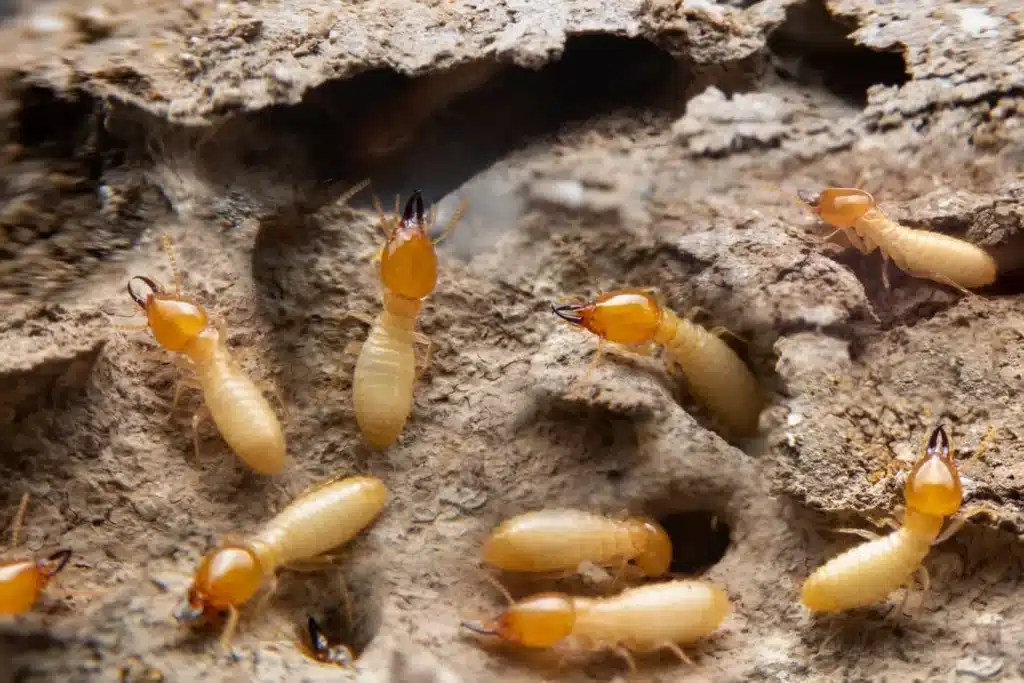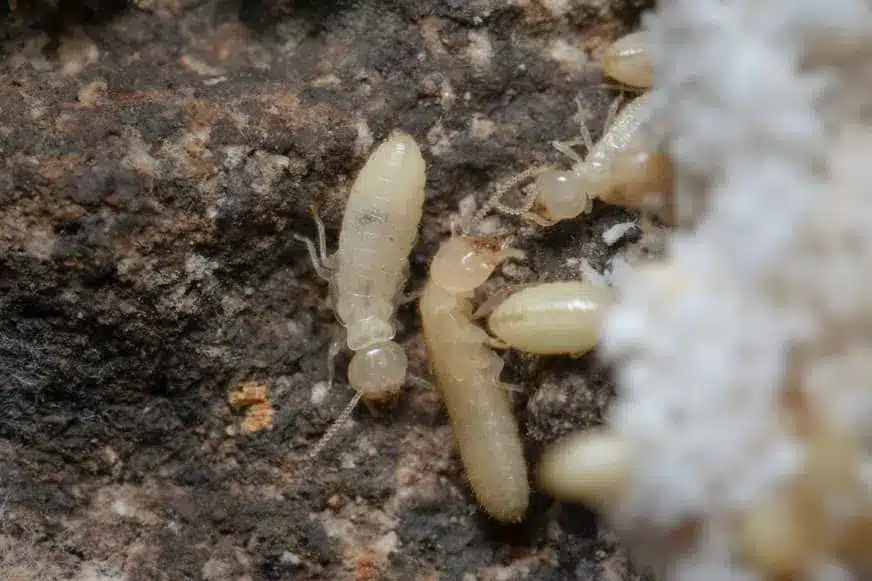Most homeowners have no knowledge of termites in general. Termites can cause some major structural damage to your home. They create colonies that could be very large and very difficult to get rid of. Although there are different types of termites, they can all do damage to your property. Hiring a pest control company is key or a home inspection company that offers this service. All living organisms have life cycles and you can read up on the life cycle of a termite in order to ensure they haven’t been at your house too long. How long do termites live? Believe it or not, a queen can live 30 years. The lifespan varies depending on the type of termite.
Let’s take a look below at some more details regarding termites.
What Is A Termite
A termite is a small insect that loves dead plant matter. Termites love the soil, wood chips, logs, and leaf litter. Often called, “white ants” by many, they do more damage than ants. Their mud tunnels are underground, allowing them to crawl into a home.
There are a few species of termites, so let’s take a look.
Dampwood Termites- trees that have fallen to the ground and are wet and rotted are a favorite for this termite to live in.
Drywood Termites – this type of termite likes to live in new home developments, furniture, trees in a forest, and dry firewood.
Subterranean Termites – this termite like that moisture rich areas and dig mud tunnels underground that go directly into homes and buildings.
Winged Termites – termite colonies that are well-developed have this type of termite. They will swarm, then mate, and create a new colony. The bodies are yellow or black and the wings are the same size.

Subterranean termites
What Is The Life Cycle
1: Termite Eggs
Within a few days or weeks after mating, a queen termite lays 6 to 12 eggs. In fact, a queen termite may lay up to 1000 eggs during the day. The first set of eggs that are born are taken care of by the king and queen. These termite larvae are soft, small, and have no color.
2: Termite Nymphs
Termite larvae are fed food that is regurgitated. This helps them grow into workers, then soldiers, and more developed nymphs. Termites grow into nymphs and take over as well as care for their siblings. They also take care of the king and queen as well as the new eggs. Many of these termites will become worker termites, the ones that are immature. They become workers because they aren’t able to reproduce and will do most of the work in the colony. Some of these workers will then develop into soldiers. The job of the soldier is to keep the colony safe.
Some of the workers will grow wings and swarm and these swarmers can reproduce. There are also secondary reproductives that may not have developed wings but can reproduce. Then there are tertiary reproductives that don’t have any wings. Both types of termites are in charge if the king or queen dies.
3: Termite Adults
Most termite workers stay workers for the span of their life. However, If they become reproductive adults, their bodies darken, they have wings and eyes and leave the nest at the same time. Additionally, the life cycle seems like it takes a long time, but it is about a year.
How Can I Prevent Them
There are a few things you can do to prevent termites.
- Look for signs of colonies or termites in the home.
- Check for vegetation that is touching the home, standing water in the yard, or other issues with the landscape.
- Consider installing downspouts if you don’t have any so they carry water away from the home.
- Gutters should be free flowing and clean so you don’t have standing water in the yard.
- Firewood that is stored away from the home is best so termites stay away.
Other Recommended Maintenance
Now that you know about termites, let’s take a look at a few areas around the home to keep up the maintenance. One of those is stink bugs. You may see this odd-looking bug near your home so you want to make sure that you seal any openings in the home to keep this bug and others out.
Next, there may be smells of dead animals that may make their way into the home. Sometimes we may smell something and think it is the trash. However, if you smell the trash and that is not it, then it could be a dead animal and possibly a dead mouse. To get rid of the smell, dispose of the dead mouse, clean and disinfect the area, air out your home, and then contact a pest service. They can help you figure out how the animal made it into your home and prevent future pests.
Lastly, keep an eye out for powder post beetles, especially if you are in the market to buy a new home. Unfortunately, they can cause structural damage to the wood in the home. Contact a pest control company to take care of them before they wreak havoc.

Termites that look like white ants.
When Do I Call A Professional
If you see termites in or near your home, contact a professional. Also, if you see a swarm, it is important to have a professional come out within a few days to see it. This will allow the inspector to find out what is going on and search for more wood-destroying organisms. The last thing you want is a termite infestation in your home. Termite control from a company can help you get rid of the problem.
Conclusion
Our homes are very important to us and need protecting. Finding termites early in the life cycle is better than later. Protecting your home and family is important so making sure you have a wood-destroying insect inspection is essential. Termites can destroy your home quickly so calling a professional company is a good idea. Call on Enviroquest Home Inspections for a termite inspection and complete home inspections in Harrisburg, PA.
